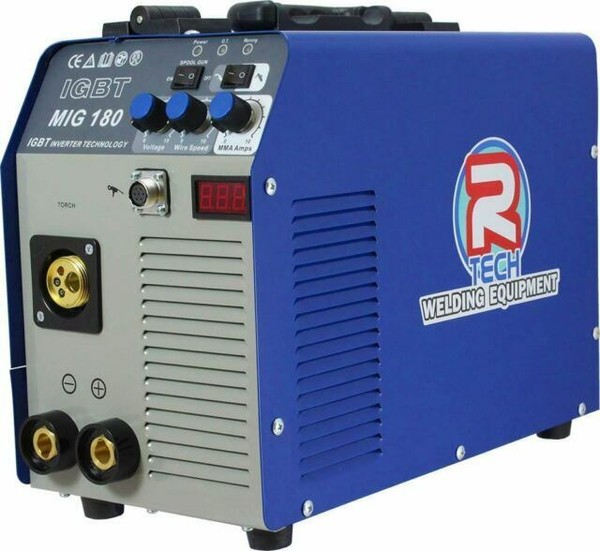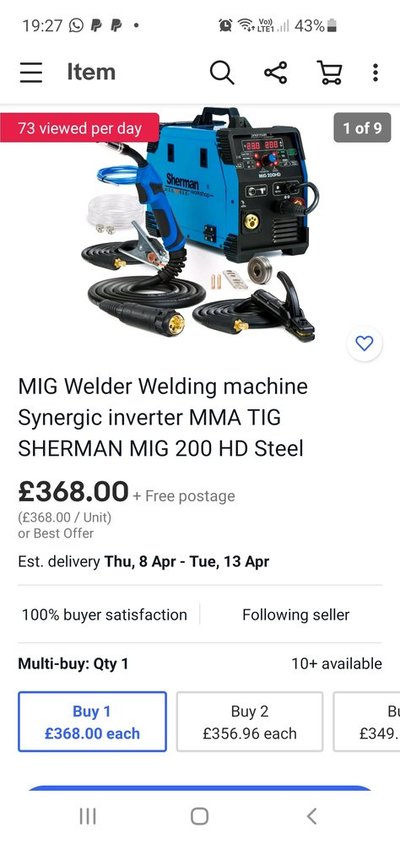An unused one was listed on Ebay today:R -Tech 180 for me
I have one at home as well as one at work
Very good on stick as well
Option of alloy spool gun
Even decent on scratch start TIG

R-Tech MIG180 180A 240V Portable Inverter Welder - Blue for sale online | eBay
Find many great new & used options and get the best deals for R-Tech MIG180 180A 240V Portable Inverter Welder - Blue at the best online prices at eBay! Free delivery for many products!
www.ebay.co.uk




